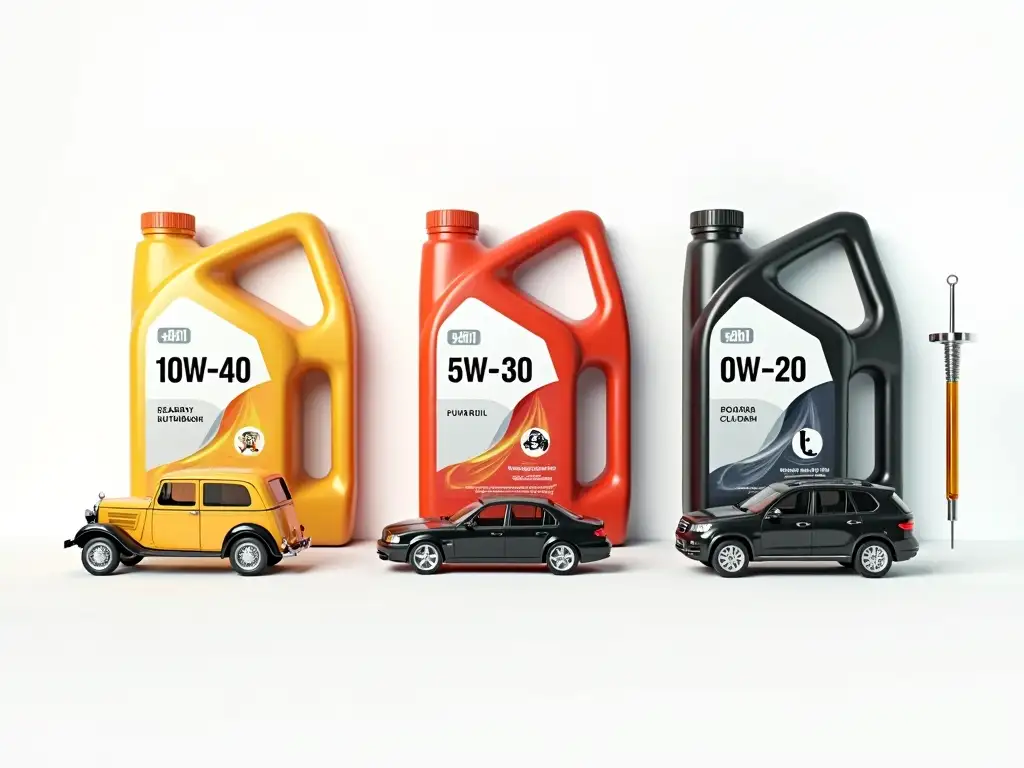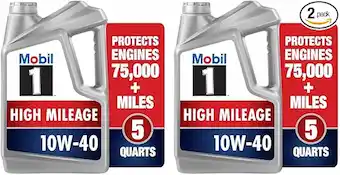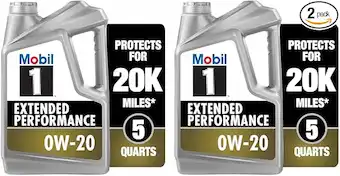Why Doing Your Own Oil Change at Home Is Simpler (and Smarter) Than Most People Realize
Most car owners think changing oil is a messy, complicated job that only a mechanic can handle. The truth? If you can hold a wrench and follow a few steps, you can change your own oil — and in many cases, do it better than a quick-stop shop.
Here’s why: when you remove the drain plug (bouchon) and let the engine oil drain for a longer period — say, 4 hours(Ideally four hours, but even 30 minutes removes 95%—better than any shop’s rushed job.) instead of the typical 10–15 minutes — you give gravity enough time to pull out almost every drop of the old, dirty oil. Mechanics rarely have that luxury because time is money in their shop. At home, you control the process.
Not only do you save on labor costs, but you also get the satisfaction of knowing the job is done thoroughly, using the exact oil and filter you trust.
Let’s dive into the details — from choosing the right oil to step-by-step instructions and tools needed.
Table of Contents
1. Best Oil Change at Home: How to Choose the Right One for Your Car

Picking engine oil isn’t as simple as grabbing any bottle off the shelf. I learned this the hard way when I put the wrong oil in my ’98 Tacoma and ended up with lifter tick that took months to resolve. Here’s what really matters:
Understanding Those Mysterious Numbers
When you see something like 10W-40 on the bottle:
- The number before the W (Winter) tells you how it flows when cold
- The second number is thickness at normal operating temp
Real-World Oil Recommendations:
• 10W-40 – My go-to for older engines (think pre-2000 vehicles). The thicker hot viscosity helps protect worn bearings, but it’s miserable for cold starts below freezing. I keep this in my ’89 Land Cruiser during Texas summers.

• 5W-30 – The workhorse for most modern vehicles. My Honda Accord runs this year-round. Good balance – starts decently in winter but doesn’t get too thin when the engine’s hot.

• 0W-20 – Newer cars love this, but I’m skeptical for high-mileage engines. My neighbor’s Camry burned through it faster than the 5W-30 it originally used.

Synthetic vs Conventional – The Truth:
After rebuilding a few engines, here’s what I’ve found:
- Conventional oil works fine if you change it every 3,000 miles like clockwork
- Synthetic is worth it if you:
- Drive in extreme temps (below 0°F or over 100°F regularly)
- Push your engine hard (towing, racing, mountain driving)
- Want to extend change intervals (but still check your dipstick!)
Pro Tip From Experience: That oil cap under your hood? It often shows the recommended weight. And if you’re switching types (like conventional to synthetic), don’t believe the old myths – you don’t need any special flush if your engine’s in decent shape.
Remember – what worked for your dad’s ’85 Chevy might wreck a 2020 EcoBoost. Always check the manual first, then consider your climate and driving habits. I keep a logbook of what oil I use and how the engine responds – it’s saved me thousands in repairs over the years.
2. How to Change Your Oil and Filter at Home (Step-by-Step)
Forget those sterile how-to guides – here’s how we actually do it in the driveway. I’ve changed oil in everything from ’70s muscle cars to modern crossovers, and these are the tricks that save time and frustration.
Tools Needed for an Oil Change
- Oil (check your manual, but buy an extra quart – you’ll thank me later)
- Oil filter (get the good one – Fram Ultra or Wix, not the $3 special)
- 15mm wrench (most common drain plug size, but check yours)
- Oil filter wrench (the cap-style ones work best when space is tight)
- Drain pan (get one with at least 8qt capacity – overfilling is messy)
- Funnel (the flexible kind that doesn’t tip over)
- Latex gloves (the thick black nitrile ones don’t tear as easily)
- Cardboard (from that Amazon box – kneel on it and catch drips)
- Breaker bar (for stubborn drain plugs – ask me how I know)
Pro Tip: Keep an old coffee can for the used filter – it’ll drip for hours.*
The Right Way to Do It (Without the Mess)
- Warm It Up Right
Drive the car around the block – just idling doesn’t get the oil hot enough. You want it warm to the touch, not scalding. - Jacking Safely
- Use jack stands every time – I’ve seen cars slip off jacks
- Ramps are great for low-clearance cars (but chock the rear wheels)
- Put the transmission in park with the parking brake on
- Draining Like a Pro
- Loosen the fill cap first (lets it drain faster)
- Position the pan to catch the initial stream (it always arcs farther than you think)
- After removing the plug, push it sideways against the threads to stop the flow when repositioning the pan
- Filter Secrets
- Punch a screwdriver through the old filter if it’s stuck (messy but effective)
- Rub new oil on the gasket and the filter base (prevents sticking next time)
- Hand-tight plus 1/4 turn – no wrenches unless specified
- Filling Without Spills
- Pour slowly until the last quart – that’s when it always overflows
- Wait 2 minutes before checking the dipstick (let it settle)
- Start the engine before lowering the car – check for leaks immediately
The Forgotten Steps Most Guides Miss:
- Wipe the drain plug and pan clean – metal shavings stick to them
- Record the mileage and date on the filter with a sharpie
- Take the old oil to AutoZone the same day – otherwise it’ll sit in your garage for 6 months
War Story: I once forgot to put the drain plug back in before adding new oil. 5 quarts of fresh Mobil 1 on the driveway in 10 seconds flat. Don’t be me – double check everything.
3. How Many Kilometers Before You Need an Oil Change
City drivers – you’re hardest on your oil. All those cold starts and stop-and-go trips mean changing every 6,000 km is smart. Your oil gets diluted with gas and never gets hot enough to burn off condensation.
Highway warriors get more leeway. If most of your driving is steady cruising, 10,000 km intervals are fine with good synthetic. But check that dipstick monthly – if it’s black before your due date, change it early.
Turbocharged? You’re in the “special care” club. That turbo cooks your oil at 1,000°F. Change every 5,000 km no matter what the manual says. Same goes for extreme climates – bitter cold and scorching heat both break oil down faster.
pro tip: Change every 5,000 km and use synthetic—conventional oil cooks into sludge in turbos
Old-timers and weekend toys need attention too. Classics should get fresh oil every spring, even if they barely moved. Oil breaks down over time, not just miles.
Here’s my mechanic’s secret: Keep a logbook. Note every change, the oil type, and how much you added between changes. Spot problems before they spot your wallet. Oil changes are cheap insurance against engine rebuilds.
Pro Tip: That “oil life” monitor? It’s just guessing. Your dipstick tells the real story. If in doubt, change it out. Your engine will thank you with years of faithful service.
💡 Pro Tip: Keep a stash of shop towels or rags for wiping up drips.
DIY Oil Change FAQs
“Can I change my own oil at home?”
Yes! You’ll need:
- Your car’s recommended oil (check the manual)
- The right oil filter
- Basic tools (wrench, drain pan, funnel)
- About 30-45 minutes of time
“How much money does DIY oil change save?”
Typically 40-60% vs. a shop. Example:
- Shop charge: $75+
- DIY cost: $30-40 (quality oil + filter)
“Can I mix new oil with old oil?”
Only for emergency top-ups. For a full change:
✔ Always drain old oil completely
✖ Never mix different oil types (e.g., synthetic + conventional)
“What happens if I delay my oil change?”
Risks increase after 1,000km past due:
- Sludge buildup
- Reduced engine protection
- Potential warranty void (for newer cars)
Pro Tip: Set a reminder for 500km before your due date – gives you time to schedule the change.
Final Thoughts: Why DIY Oil Changes Win
Changing your own oil does more than save $40-$60 per visit. It gives you control most quick-lube shops can’t match:
- Drain thoroughly – No rushed 5-minute drains that leave old oil behind
- Use premium oil – Not whatever bulk blend is on special
- Inspect as you go – Spot leaks or wear most mechanics would miss
I’ve found engines last longer when owners do their own changes. You care more than any shop ever will.
Your Turn:
👉 Tried a DIY change? Share your biggest win (or messy lesson!) below.

Pingback: The Best Way to Clean Car Battery Terminals (Expert Advice)
Pingback: Top Reasons Your Fuel Gauge Is Not Working & How to Fix Them
Pingback: Car Leaking Oil? 17-Year Mechanic Shares Smart Fixes
Pingback: Audi Maintenance schedule 2025: Costs, Services & Pro Advice
Pingback: 8 Car Dash Symbols: Meanings, Fixes & Expert Tips
Pingback: Best Used Toyota Tundra Years & Prices Explained(2025 guide)